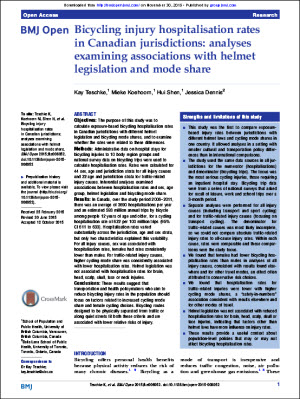 A Canadian study examined bicycling hospitalization rates in jurisdictions with different helmet legislation and bicycling mode shares to determine whether hospitalization rates were related to differences in helmet laws or bicycling mode shares.
A Canadian study examined bicycling hospitalization rates in jurisdictions with different helmet legislation and bicycling mode shares to determine whether hospitalization rates were related to differences in helmet laws or bicycling mode shares.
It analyzed dozens of factors and found that, for all injury causes, the key factor was sex as women had rates consistently lower than males. However for traffic-related injury causes, it was higher cycling mode share which underscored a "safety-in-numbers" association consistent with results elsewhere and for other modes of travel.
According to the researchers, these results suggest that transportation and health policymakers who aim to reduce bicycling injury rates in the population should instead focus on factors related to increased cycling mode share and female cycling choices. Bicycling routes designed to be physically separated from traffic or along quiet streets fit both these criteria and are associated with lower relative risks of injury.